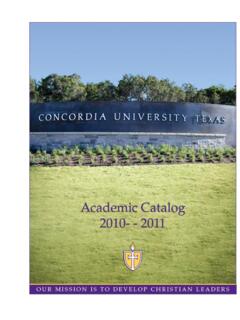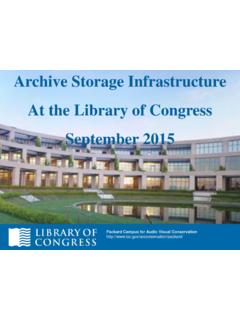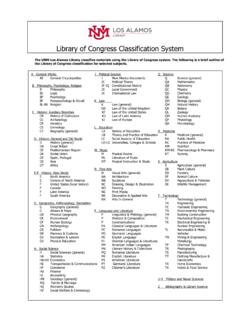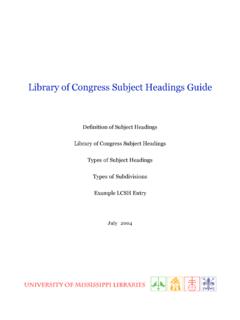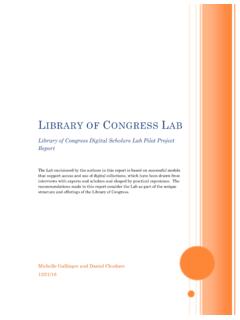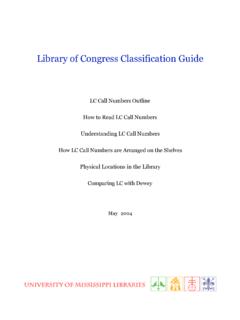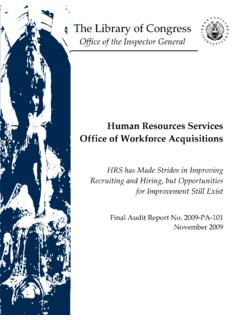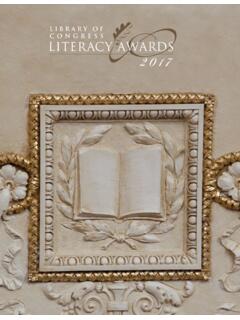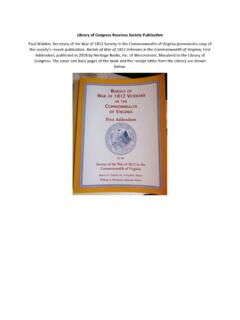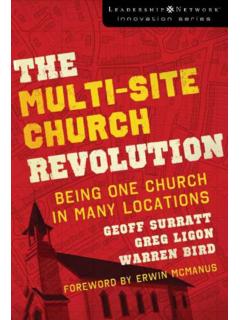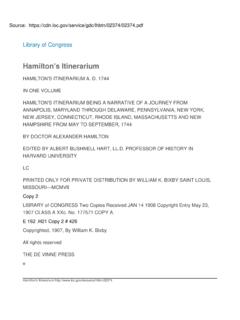Transcription of Library of Congress Subject Classification Guide
1 Library of Congress Subject Classification Guide This Guide provides a basic outline of the Classification system that was developed at the turn of the 20th century to organize the collection of the Library of Congress . Here at Concordia, we use the same system to organize our collection. An understanding of this Classification method will help you fully exploit the resources of your Library , and will also sharpen your searching and browsing skills. If you have any questions, or you do not see the information you need, contact the Library at Knowing the inner workings of the Library of Congress (LOC) Classification system will allow you to read the information in a call number. This will be useful because each element of the call number gives you an important clue about the work it identifies, which can help you determine whether the item you have found will actually be relevant and useful. The Library of Congress system can seem more complicated than the Dewey Decimal system, used by many school and public libraries, but it can be navigated with ease, once you have mastered its basic components.
2 21 Classes The Library of Congress (LOC) Classification system divides all material into 21 classes, also known as Subject areas. These classes are: A - General Works B - Philosophy, Psychology, Religion B-BJ: Philosophy, Psychology, Parapsychology BL-BX: Religions, Mythology C - Auxiliary Sciences of History D - History: General & Outside the Americas E - History: United States F - History: United States Local & America G - Geography, Anthropology, Recreation H - Social Sciences H-HJ: Statistics, Economic theory, Finance HM-HX: Sociology J - Political Science K - Law L - Education M - Music N - Fine Arts P - Language and Literature Q - Science R - Medicine S - Agriculture T - Technology U - Military Science V - Naval Science Z - Library Science & Information Resources Sample Call Number The classes above give you the first letter of the call number and provide a basic sense for the general Subject of the work, but there are other elements that help you gain a more specific understanding of the nature of the item.
3 Here is an example: .M855 1996 Because the first letter of this call number is an L this book will fall under the general area of Education. The second letter gives you the subclass, or more specific Subject description. In this example, the subclass lets you know that this book will be related to the topic of multicultural education. Other subclasses in the Education Subject area include: LA: History of Education, LB: Theory and Practice, LC: Special Aspects, etc. Last updated June 2010 If you do not have a specific title in mind, but know the topic that you would like to research, it can be helpful to browse in the shelf in a particular Subject area. For a complete list of all subclasses, you can go to the Library of Congress Classification Outline: Cutter Numbers Now you can decipher the first section of the example call number, which tells you about the Subject of the work. The next element, called the Cutter number, is an alphanumeric code that translates the title main entry or author s name into a series of letters and numbers, allowing items to be arranged alphabetically with ease.
4 Some books have two Cutter numbers. In these cases, the former gives some further indication of the Subject matter..M855 1996 This element simplifies the process of locating a specific item on the shelf, although it will probably be less useful to you for browsing purposes. Publication Year The last portion of the LOC call number provides the year of publication; including the year of publication in the call number was not always standard practice, so it will sometimes be omitted..M855 1996 Although the most self-evident element, the year of publication can often be the most valuable because it allows you to quickly gauge whether a work is likely to be up to date. It is important to rely only on current material in fields that develop and change rapidly. Some works can continue to have literary merit and historical value for decades, but should not be used as the final authority in theoretical matters. Any questions? The more knowledgeable you are about the inner-workings of the Library system, the more you will be able to take advantage of the resources we offer.
5 Please feel free to contact us regarding any questions you have about Classification systems or any other Library -related issue at References The Library of Congress website: MacDonald, Bernice. (1980) How to Use Reference Material. New York, NY : Watts, 1980. Z 711 .M2 1980
